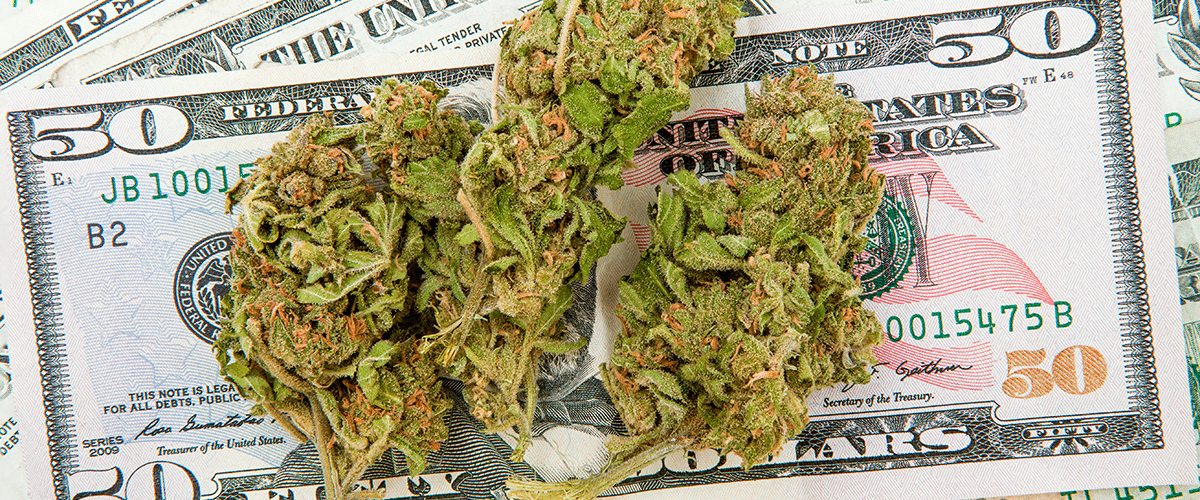[vc_row][vc_column][vc_column_text]
Colorado has become the first state to reach over $1 billion in legal, regulated annual cannabis sales, generating more than $150 million in tax revenue for the state this year so far.
Colorado’s legal cannabis sales passed the $1 billion mark in the first 10 months of 2016, The Denver Post reports. According to data provided by Colorado’s Department of Revenue, recreational and medical marijuana shops sold nearly $1.1 billion in marijuana and related products through October. With two months left, The Denver Post’s Cannabist estimates that the market could hit $1.3 billion for the year, which would be a 30 percent jump up from last year’s sales total of $996 million.
“This milestone continued to show that the cannabis industry in Colorado is an engine of growth for the economy, a job creator, and one of the biggest industries in the state,” attorney and marijuana advocate Christian Sederberg, told CNN. Sederberg was instrumental in passing the initiative that legalized adult use marijuana in Colorado. “People were consuming cannabis before, but now they are buying it from tax-regulated businesses that are benefiting the economy. This has replaced an underground, illegal market.”
Colorado saw $82.8 million in retail marijuana sales in October alone, as well as more than $34 million in medical marijuana sales. In September, sales hit $127.8 million, Colorado’s all time monthly high. The state broke its record of monthly cannabis sales several times this year.
The year’s cannabis sales have collected more than $150 million in tax revenue so far for 2016, up from $120 million in 2015 and $63.4 million in 2014. The first $40 million of that total comes from a specific excise tax that goes directly to funding school construction projects, while any additional goes to the state’s public school fund. Colorado cities like Aurora have been using excess tax revenue from recreational sales to feed, house, and support its homeless population. Gov. John Hickenlooper has said he’s hoping to do the same throughout the state with excess funds in 2017 and 2018.
“We spend more than twice as much… perpetuating lives of misery by letting people live under bridges than we would getting them into housing and giving them wrap-around services – by which I mean job training at the top of the list, counseling for addictions and medications for mental health,” Hickenlooper told The Denver Post last month.[/vc_column_text][/vc_column][/vc_row][vc_row][vc_column][vc_single_image image=”17394″ img_size=”1200×250″ onclick=”custom_link” link=”https://www.medicalmarijuanainc.com/legal-marijuana-sales-forecasts-potentially-44-billion-2020/”][/vc_column][/vc_row][vc_row][vc_column][vc_column_text]The legal marijuana industry in the United States could reach up to $44 billion billion in total annual sales by 2020, according to a report published earlier this year by industry research firm ArcView Group. A more recent report from Marijuana Policy Group found that more than 18,000 full-time jobs were created in 2015 by Colorado’s legal marijuana market.
Colorado was the first state to legalize recreational marijuana in 2012, but the state’s first full year of sales where it was open for sales wasn’t until 2014. The state saw a 42 percent spike in legal cannabis sales from 2014 to 2015. Since Colorado led the way, seven other states – Washington, Oregon, Alaska, California, Massachusetts, Maine, and Nevada – have also legalized adult use marijuana. Medical marijuana has been legal in Colorado since 2000.
Colorado’s end-of-year marijuana sales numbers will be released by the state’s Department of Revenue in February 2017.
Keep up with the nation’s growing legal cannabis market by regularly visiting our news feed.[/vc_column_text][/vc_column][/vc_row]






